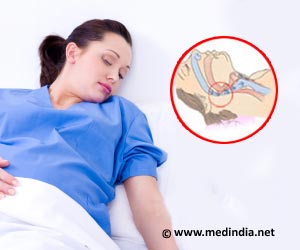The rate of serious, preventable crashes was 5 times higher among truck drivers with sleep apnea who failed to adhere to positive airway pressure (PAP) therapy.

‘Untreated obstructive sleep apnea is a safety threat to commercial motor vehicle drivers, as it increases the risk of serious and preventable truck crashes.’





Results show that the rate of serious, preventable crashes was 5 times higher among truck drivers with sleep apnea who failed to adhere to PAP therapy, compared with matched controls. In contrast, the crash rate of drivers with sleep apnea who were fully or partially adherent with treatment was statistically similar to controls. "The most surprising result of our study is the strength and robustness of the increase in the crash risk for drivers with sleep apnea who fail to adhere to mandated treatment with positive airway pressure therapy," said lead author Stephen V. Burks, PhD, professor of economics and management and principal investigator of the Truckers & Turnover Project at the University of Minnesota, Morris. "The results of our study support the establishment of obstructive sleep apnea screening standards for all drivers through the commercial driver's medical exam."
The accepted manuscript was posted on the website of the journal Sleep on March 21, 2016.
"This study emphasizes that untreated obstructive sleep apnea is a pervasive threat to transportation safety," said American Academy of Sleep Medicine President Dr. Nathaniel Watson, who was not involved in the study. "It is critical for transportation companies to implement comprehensive sleep apnea screening and treatment programs to ensure that truck drivers stay awake at the wheel."
According to the American Academy of Sleep Medicine, obstructive sleep apnea (OSA) is a common sleep disease afflicting at least 25 million adults in the USA frequent warning sign for sleep apnea is excessive daytime sleepiness, which can manifest as drowsy driving. The first-line treatment option for obstructive sleep apnea is PAP therapy, which helps keep the airway open by providing a stream of air through a mask that is worn during sleep.
Advertisement
According to the authors, panels of medical experts previously convened by the Federal Motor Carrier Safety Administration (FMCSA) have recommended comprehensive sleep apnea screening for commercial drivers. However, rather than instituting mandatory screening, current federal regulations rely on drivers to self-report sleep apnea symptoms during a biennial medical examination to determine their fitness for duty. On March 8, 2016, the FMCSA and Federal Railroad Administration (FRA) issued a joint Advance Notice of Proposed Rule-making, which is the first step as both agencies consider whether to propose specific requirements for screening, evaluating and treating rail workers and commercial motor vehicle drivers for obstructive sleep apnea.
Advertisement
"Given that the risk of heart disease, cancer, diabetes, dementia and premature death are similarly increased in people with untreated obstructive sleep apnea, regulatory agencies worldwide owe it to truck drivers and to the motorists who share the road with them to require objective screening, diagnostic testing, and treatment adherence monitoring for all commercial drivers."
Source-Eurekalert















